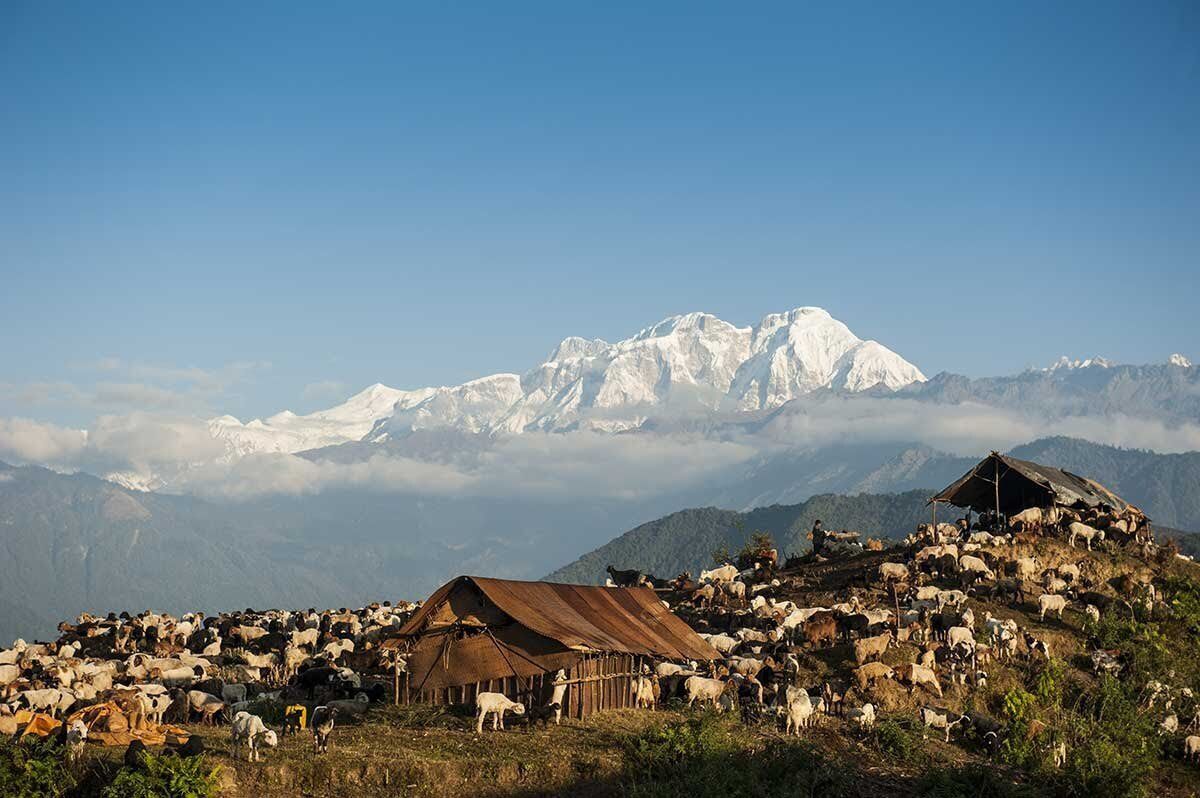
By Pema Gyamtsho, ICIMOD
KATHMANDU, Apr. 22 -- Today, as we mark World Earth Day 2025, I find myself reflecting not just on the urgent challenges we face, but also on the immense power we each hold to shape a better future.
The theme, “Our Power, Our Planet,” speaks straight to my heart. This is because the future of our Earth doesn’t rest only with world leaders in conference halls or decisions taken at the top. It also lives in our everyday choices, our collective courage, and our local actions. And that’s exactly what drives us here at ICIMOD – working together to protect the fragile yet vital Hindu Kush Himalaya (HKH), our shared mountain home.
This region is stunning. Sacred. Life-giving. But it’s also under immense pressure.
A region on the edge
Climate change is no longer a distant threat here – it’s a lived reality. The HKH is warming faster than the global average. Even if we manage to limit global warming to the Paris Agreement goal of 1.5°C, we could still lose a third of our glaciers by 2100. And if emissions keep climbing? That loss could reach two-thirds, putting over 2 billion lives in the mountains and downstream at risk of floods, droughts, and water insecurity.
Meanwhile, air pollution continues to choke our cities and villages. PM2.5 levels in many areas regularly exceed WHO air quality guidelines; in April this year, levels were up to 77 times the safe levels in some areas. This harms our health and affects the environment. Along with warming from greenhouse gases, air pollution, such as black carbon and dust, traps excess heat causing the climate to warm, and accelerates the melting of glaciers. And because air doesn’t stop at borders, this is a challenge we can only solve together, across countries and communities.
Then there’s biodiversity loss – a quieter crisis, but just as devastating. The HKH is one of the most biodiverse regions on Earth, home to tigers, red pandas, snow leopards, and thousands of unique species. But habitat loss, pollution, invasive species, and climate change are putting this incredible natural heritage on the brink.
It’s easy to feel overwhelmed. But there’s also hope – and we see it every day.
Turning the tide with clean energy
Hope is rising with the sun – literally. Renewable energy is not just an alternative, it’s a powerful, practical solution – now an imperative. By investing in solar, wind, hydro, and clean cooking technologies, we can reduce emissions, clean our air, and build more resilient communities.
At ICIMOD, we’re seeing this in action. From solar microgrids in remote villages to solar-powered irrigation and cold storage, we’re helping mountain communities shift away from polluting fuels. We’re showing that even in tough terrains, decarbonisation is not just possible, it’s happening.
And yes, renewables can replace polluting energy sources across the HKH. But it takes smart, inclusive strategies:
-
Hydropower, already key in Bhutan and Nepal, remains a huge asset.
-
Decentralised solar offers off-grid solutions where traditional infrastructure falls short, especially in remote mountain areas.
-
Electric mobility can help us phase out diesel.
-
Clean cooking options like biogas and electric stoves are ready to scale – with the right support.
But it’s not just about tech. We also need investment, behavioural change, subsidies, and stronger energy systems – especially in rural and mountainous areas.
Science shows us the way
Recent scientific recommendations are clear. To curb air pollution, we must:
-
Upgrade polluting industries – like replacing old brick kilns with zig-zag technology.
-
Stop open burning and promote better crop residue management.
-
Replace biomass and fossil fuels in homes.
-
Expand electric mobility and make public transport attractive and accessible.
-
Create strong transboundary monitoring systems – because pollution doesn’t recognise political borders.
-
Align climate and air quality goals in policy.
-
Integrate clean air into urban planning.
-
And build national institutions that coordinate air pollution policies across sectors and countries.
This Earth Day, let’s make it personal
So what can you do?
Whether you’re a policymaker shaping clean air legislation, a farmer choosing solar irrigation, a student raising awareness, or a parent switching to electric cooking – you are part of the solution.
Let’s scale what works. Let’s build bridges across borders. Let’s bring the science to the streets, the mountains, and the markets.
Because in the end, our power is our planet’s future.
Together, we can protect this incredible region. Not just for us, but for the generations yet to come.
Happy Earth Day 2025.